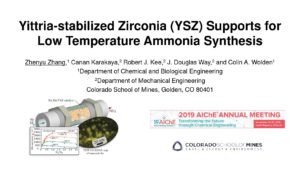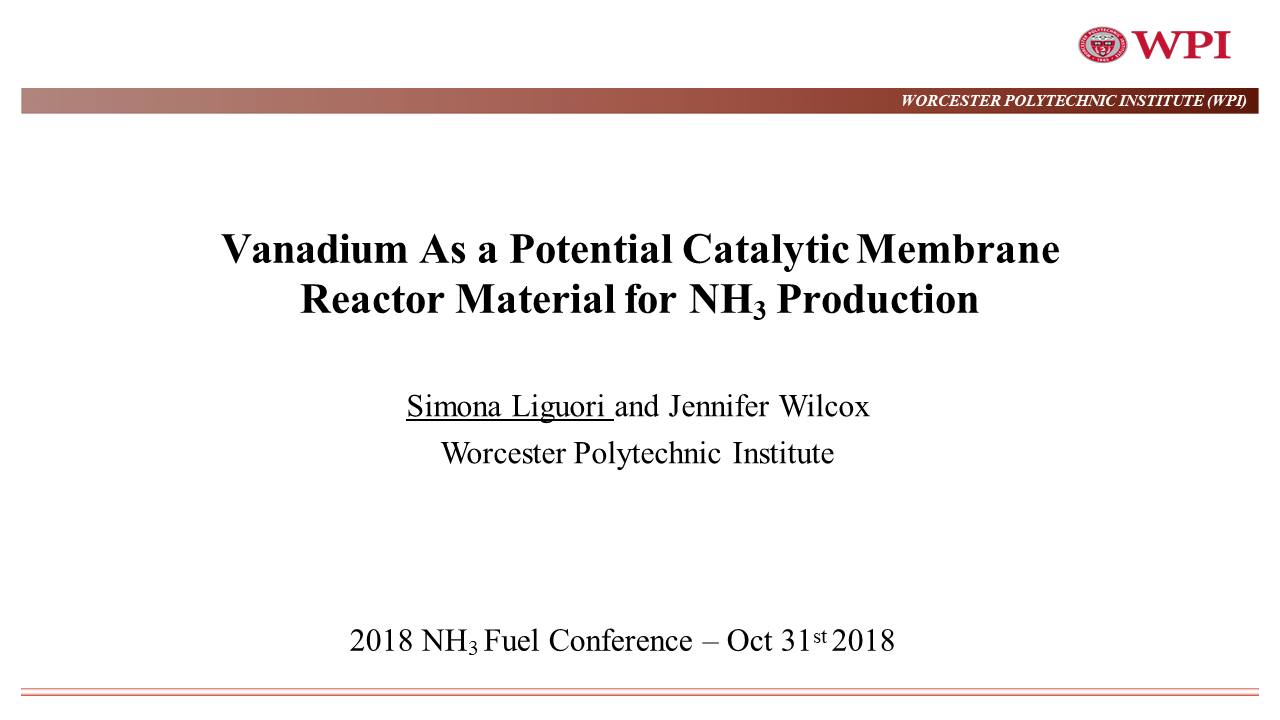NH3 is important as the raw material for fertilizer production and high hydrogen density (17.7 wt. %) energy carrier. Conventionally, NH3 is synthesized through the well-known Haber-Bosch process at 400-500°C and P~150 bar. Both critical reaction conditions and massive production (145 mt NH3 in 2014 globally) make it one of the most energy extensive process, consuming 1-2% of the world’s total energy expense. Here we introduce YSZ as a more active Ru catalyst support than traditionally used supports such as Al2O3. The addition of Cs promoter increased rates an order of magnitude higher by reducing the apparent activation energy from…
Content Related to Worcester Polytechnic Institute
Presentation
Vanadium As a Potential Catalytic Membrane Reactor Material for NH3 Production
In solid or liquid states, ammonia salts and solutions are the active components of most synthetic fertilizers used in agriculture, which consume 83% of the world’s ammonia. Today, ammonia for fertilizers is industrially produced via the Haber-Bosch process at 400-500 °C and at pressures up to 30 MPa (300 bar). These harsh operating conditions are necessary due to the high affinity of dissociated nitrogen atoms towards the catalyst surface in addition to the high barrier associated with N2 dissociation. For these reasons, the need for advanced catalytic methods for the reduction of N2 to ammonia remains a requirement for sustainability…

